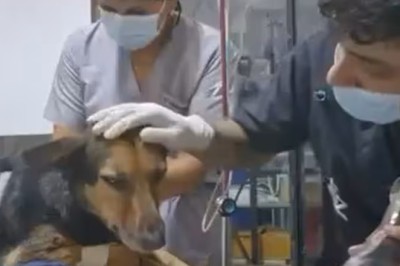Understanding and Managing Your Dog's Aggression and Reactivity
Delving into the intricacies of pet behavior is not just a quest for knowledge but a pathway to fostering a harmonious coexistence and an unbreakable bond between humans and their animal companions. One crucial aspect of this journey is navigating the realms of aggression and reactivity in dogs, unraveling the mysteries that underlie these behaviors to ensure the well-being of our beloved pets and the entire family.
Decoding Aggression and Reactivity
Contrary to popular belief, aggression and reactivity are not distinct entities but rather intertwined facets of a dog's response to various stimuli. Marina Meireles, a distinguished behavioral veterinarian at Nouvet in São Paulo, elucidates this concept by explaining that reactivity represents an exaggerated response to stimuli that would typically not provoke a reaction, with aggression often stemming from this heightened reactivity. It is vital to understand that aggression manifests in a spectrum, starting from subtle signs of discomfort and escalating to more overt aggressive displays, which extend beyond mere physical aggression like biting.
Identifying Triggers and Warning Signs
Multiple factors can trigger aggressive or reactive behavior in dogs, ranging from fear and stress to underlying pain or inadequate socialization. Recognizing the warning signs such as growling, stiff body posture, flattened ears, excessive barking, attempts to flee, or other forms of distress is pivotal in deciphering the root causes of these behaviors. By pinpointing the specific triggers that incite such reactions, pet owners can devise tailored strategies to address these issues and cultivate a secure and nurturing environment that mitigates the risk of untoward incidents.
Approaching Aggression with Care
When faced with signs of aggression or reactivity in a dog, exercising patience and keen observation is paramount. Seeking professional guidance from a veterinarian for a comprehensive assessment to rule out any underlying medical causes is essential. Oftentimes, behavioral changes in dogs can be linked to undiagnosed health issues causing physical discomfort or hormonal imbalances. Upon obtaining a clear diagnosis, engaging the services of a qualified dog trainer who specializes in behavior modification techniques is recommended to implement appropriate training protocols.
Creating a Supportive Environment
Beyond behavioral interventions, fostering an enriching environment plays a pivotal role in promoting the emotional well-being of dogs. Providing mental stimulation through interactive toys, cognitive challenges, and breed-specific physical activities catered to their innate instincts and energy levels aids in maintaining their emotional equilibrium. Furthermore, facilitating opportunities for socialization by encouraging positive interactions with other pets, humans, and novel environments nurtures their social skills, alleviates stress, and fortifies the emotional bonds between dogs and their caregivers.
Building Stronger Bonds through Understanding
Marina aptly emphasizes that investing time and effort in comprehending the unique needs of each dog fosters deeper connections and forges a healthy and harmonious relationship. Regular walks, supervised playdates with fellow canines, and engaging in social activities bolster their emotional resilience and enhance the rapport between dogs and their human companions. By prioritizing the individual well-being of their furry companions and tailoring their care to suit their specific requirements, pet owners can cultivate profound bonds and nurture a thriving partnership with their beloved canine companions.
In conclusion, by unraveling the complexities of aggression and reactivity in dogs and adopting a holistic approach centered on understanding, patience, and specialized care, pet owners can pave the way for a fulfilling companionship based on trust, mutual respect, and unwavering support.





















Comments
0 comment